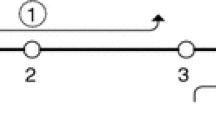Abstract
Wireless Mesh Network (WMN) technology is an attractive solution to meet the demand of broadband network access anywhere and anytime. In order to effectively support delay-sensitive applications such as video streaming and interactive gaming in a WMN, it is crucial to develop feasible methodologies and techniques for accurately analyzing, predicting and guaranteeing end-to-end delay performance over multi-hop wireless communication paths. In this paper, we extend the link-layer effective capacity model and derive a lower bound of delay-bound violation probability, or complementary cumulative distribution function, over multi-hop wireless connections. A fluid traffic model with cross traffic and a Rayleigh fading channel with additive Gaussian noise and Doppler spectrum are considered in our study. The average multi-hop delay and jitter performance bounds are also obtained. Analytical results are verified by extensive computer simulations under different traffic load and wireless channel conditions. We find that multi-hop delay performance is much more sensitive to traffic load and maximum Doppler rate than traffic correlation.





Similar content being viewed by others
Notes
The simulation results for p < 0.25 are indistinguishable from that for p = 0.25, so that are not shown in these figures.
References
Bruno R, Conti M, Gregori E (2005) Mesh networks: commodity multihop ad hoc networks. IEEE Commun Mag 43:123–131, March
Akyildiz IF, Wang X, Wang W (2005) Wireless mesh networks: a survey. Comput Netw 47:445–487, January
Wu D, Negi R (2003) Effective capacity: a wireless link model for support of quality of service. IEEE Trans Wirel Commun 2:630–643, July
Wu D, Negi R (2005) Effective capacity channel model for frequency-selective fading channels. In: Proceedinds of the 2nd International Conference on Quality of Service in Heterogeneous Wired/Wireless Networks (QShine’05), Orlando, August 2005
Yang Y, Yum TSP (2003) Delay distributions of slotted ALOHA and CSMA. IEEE Trans Commun 51(11):1846–1857, November
Ashour M, Le-Ngoc T (2007) End-to-end delay margin balancing approach for routing in multi-class networks. Wirel Netw 13(3):311–322, June
Rossi M, Vicenzi R, Zorzi M (2004) Accurate analysis of TCP on channels with memory and finite round-trip delay. IEEE Trans Wirel Commun 3(2):627–640, March
Wu D (2003) Providing quality of service guarantees in wireless networks, PhD thesis, Department of Electrical and Computer Engineering, Carnegie Mellon University, Pittsburgh, August
Pappaport TS (1996) Wireless communications: principles and practice. Prentice Hall, Englewood Cliffs
Chen Y (2007) Multi-hop delay performance in wireless mesh networks, MSc thesis, Department of Electronic and Electrical Engineering, University College London, August
Author information
Authors and Affiliations
Corresponding author
Appendices
Appendix A: Derivation of Eq. 5
The delay values for all the hops on an h-hop routing path are assumed as independent and identically distributed (i.i.d.) random variables, so the CDF of delay performance over this h-hop path can be derived as
where
Substituting Eq. 14 into Eq. 13, we obtain
Appendix B: Derivation of Eqs. 8 and 9
The delay values D i (1 ≤ i ≤ h) over an h-hop routing path are assumed as i.i.d. random variables, so the mean and standard deviation (jitter) of multi-hop delay performance can be derived as
and
Rights and permissions
About this article
Cite this article
Chen, Y., Chen, J. & Yang, Y. Multi-hop Delay Performance in Wireless Mesh Networks. Mobile Netw Appl 13, 160–168 (2008). https://doi.org/10.1007/s11036-008-0036-6
Received:
Accepted:
Published:
Issue Date:
DOI: https://doi.org/10.1007/s11036-008-0036-6




